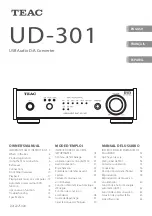
S.CON1M TX/FX Managed Converter
5
2 – Planning your network with S.CON1M
This section will guide you through network planning in order to obtain maximum
benefit - in terms of performance and functionality - from the S.CON1M converter and
other network devices. For specific instructions regarding the setup of each device,
consult section 10 - “DIP switches configuration”.
Possible network architectures are depicted in the following drawings
A. Typical basic configurations
Any networking device may connect to the copper port of the S.CON1M converters:
switches (of any type), hubs of any type (including 10Base-T!) or workstations (10 or
100Mbps).
While copper segments distances (between the device and the S.CON1M and
between such device and another device) reach their maximum at 100m/330ft, the F/O
segment (multi-mode fiber) may be extended to 2000m (6500ft) and much more over
single-mode fiber. (Up to 150Km). Single Fiber Strand (15-20 Km) can be deployed
saving 50 % of the cabling plant.
As an S.CON1M device is only slightly more expensive (if at all) than a plain 100Base-
FX transceiver (and certainly less expensive than an integrated 100Base-FX up-link
module in any of the interconnected devices), it is highly recommended to use any of
these configurations: extra benefits are obtained at little or no additional cost!
In certain configurations, additional benefits are obtained due to the implementation of
the BMD (Buffered Media Domain)
When the F/O link connects two hubs, S.CON1M not only converts media but also
splits the network into two segments, which reduces loads and collisions.






































